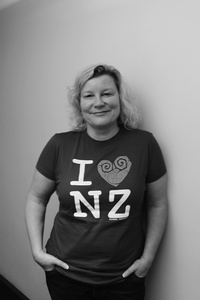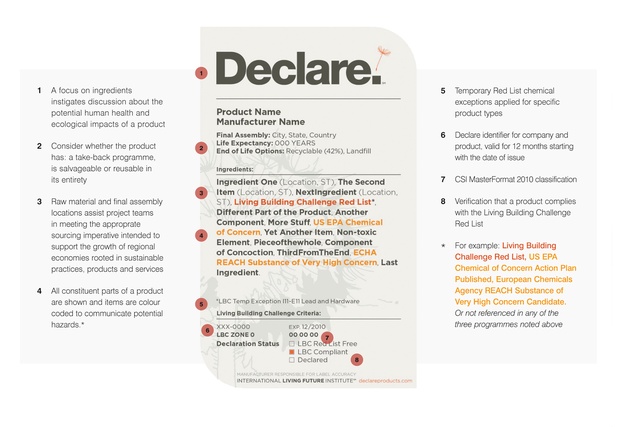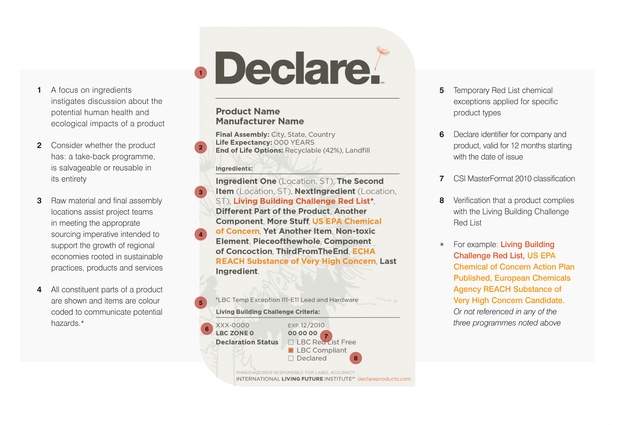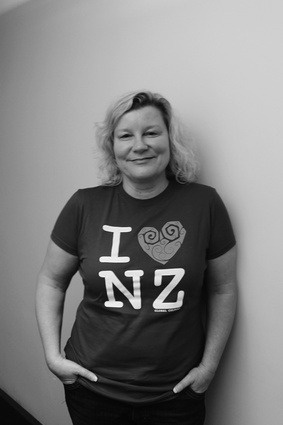Toxic declaration
What is the toxicity of this insulation? Does this laminate discharge formaldehyde emissions? Not so long ago, it was hard to find answers to these types of question but new labelling tools are now helping architects choose material products which could help to sustain the good health of a building’s occupants. Architecture New Zealand interviewed Michelle Johansson about Declare.

Architecture New Zealand: What is Declare?
Michelle Johansson: Declare is an ingredients label for building products. It’s like a ‘nutrition label’. It’s a transparency tool created in support of Living Building Challenge (LBC) requirements, but it’s also relevant to anyone wanting product health and source location information. It’s a publicly accessible database of building products which facilitates communication between manufacturers, product specifiers and consumers.
Architecture New Zealand: Where did it originate?
MJ: The LBC was developed by the International Living Future Institute (ILFI) in the United States (US). LBC is designed to encourage a healthy materials economy that is non-toxic, transparent and socially equitable. Its the most advanced sustainability certification programme for the built environment in the market today. All materials used in a LBC project must contain none of the toxic substances listed in the LBC’s Red List, unless there is a temporary exception.
Architecture New Zealand: How did it progress?
MJ: Declare was designed to capture LBCs project research. The product label provides an accessible list of ingredients, including toxicity information, so that future project teams do not have to reinvent the wheel each time. It reduces the level of material research required by specifiers of green buildings, saving hours of time.
Architecture New Zealand: How many labels are there?
MJ: Currently, there are 174 Declare labels globally; New Zealand has the second-highest label count at 17, after the US and ahead of Canada and China. I would love to see Declare labels on all of our everyday products so it becomes easy to build a non-toxic building, and LBC and Green Star become the norm because the materials part is easy.
Architecture New Zealand: What is the state of the manufacturing landscape in New Zealand in this regard?
MJ: The LBC made me realise that we are doing very well for Red List free/compliant materials. Manufacturers just need to realise that too and tell us with Declare. Every Declare product item requires personal interaction between the specifier and the manufacturers involved: to explain why each ingredient or component is important to product selection. Those cumulative discussions have created a transformation in thinking.
My experience, after two years of LBC research on the Tuhoe building whilst at Jasmax, is that, once the principles of the Declare programme are understood, manufacturers who have been engaged with the project will pick it up and run with it, gaining a deeper knowledge of their own products.
Architecture New Zealand: The sustainability message has been bandied about; why is it still relevant?
MJ: We literally eat our buildings. We spend, on average, 90 per cent of a 24-hour day indoors. We inhale, ingest and absorb our built environment – through contact, dust and volatile organic compounds (VOCs) – and it is not to our benefit. Building materials are primarily a health issue that will not go away any time soon without consumer pressure and education.
This sits above the sustainable messages about saving energy and water during manufacture. The toxicity issue is woven into the green movement because sustainability also means the ability to sustain the good health of the building’s occupants.
Architecture New Zealand: Is there significant research about how the toxicity of materials affects human health?
MJ: Information from Arlene Blum at the Green Science Policy Institute and the Business & Institutional Furniture Manufacturers Association (BIFMA) relates that there are 80,000 chemicals on the US market and 62,000 were ‘grandfathered’ in 1976 by the Toxic Substances Control Act, so ‘approved with no testing’. Of the remaining 18,000 chemicals, 85 per cent have no health and safety data and 67 per cent have no data at all.
Only 22 chemicals have been banned by the Stockholm Convention but many of those have been replaced by chemicals that are worse. PFOA (C8) and PFOS, for example, are well studied and C8 is everywhere but it is toxic and lasts forever (Environmental Protection Agency, 2003). PFOA is used as a processing aid in the manufacture of fluoropolymers to produce hundreds of items such as non-stick surfaces on cookware, and protective finishes on carpets and clothing.
Is C8 needed? Flame retardants (Br, Cl, phosphates) are proven not to be effective in big flame situations. Soot, carbon monoxide and dioxins are released when polybromides burn, and these have similar effects to those of lead poisoning. The US is asking whether it needs flame retardants in their building code. Luckily, the New Zealand Building Code doesn’t call them up specifically.
Halogenated flame retardants (HFRs) are also semi-VOCs, which settle into dust and are inhaled. HFRs in extruded polystyrene insulation (XPS) are not bound chemically to the polystyrene and are available to water and soil contact, leaching out into the water table and ending up in the sea. Their concentration then increases up the food chain, proving fatal to orca (Dr Ingrid Visser, New Zealand marine biologist).
Plasticisers – bisphenols and phthalates – are powerful endocrine disrupters. Don’t buy bisphenol A (BPA)-free products; the substitute, bisphenol S (BP-S), is even worse. The economic loss for a manufacturer forced to leave out a toxic chemical should not be a justification for leaving it in.
Education and advocacy around toxic chemicals is like pushing sand uphill but it has to be done. We can all think of chemicals, which we used freely in the past, that are now banned but still persist in the environment.

Architecture New Zealand: How does Declare differ from other labels, such as EPDs, LCA, ECNZ and Green Tag?
MJ: All green building tools are working to improve the environment that we inhabit daily. Declare stands by itself as an upfront consumer green guide. It doesn’t compete with other labels as each programme inhabits its own niche. They have overlaps in what they assess and the potential to support each other. Declare’s point of difference is that it makes the full ingredient list of the product transparent to consumers at a glance, and shows how the ingredients measure up against the Red List and US EPA and REACH Chemicals of Concern. No other rating tool does that. It also states where the product is manufactured and where the ingredients are sourced, VOCs, expected durability and recycling/reuse pathways.
Architecture New Zealand: Is Declare expensive for manufacturers?
MJ: Declare is reasonably priced: USD$850 for one product, USD$700 for two to 10 products and USD$600 for 10 or more products, per annum. Renewal fees are 50 per cent of the initial fee if no change has been made, or 100 per cent if changes have been made, including resubmittal of documentation. If a Red List ingredient has been removed, then the annual fee is waived.
Architecture New Zealand: How can architects trust Declare?
MJ: ‘Participating in Declare’ means the product has voluntarily self-disclosed all ingredients. Even though Declare is not a certification programme as such, the ILFI vets each application and requires documented proof. The ‘trust’ lies with the manufacturers who have taken the steps towards transparency. Throwing the ingredients up in public is more subject to scrutiny and vetting than a third party certification behind closed doors.
Since the information is 100% transparent and publicly available, it provides a feedback loop for manufacturers or NGO’s to dispute a claim. Some manufacturers ‘declare’ and list their Red List ingredients, often while working to remove the chemicals in a concerted effort to be transparent.
Architecture New Zealand: But how do manufacturers protect any ‘secret’ ingredients?
MJ: Declare allows for one per cent of proprietary ingredients to be withheld from the label but disclosed to ILFI – a caveat for companies manufacturing similar products to keep their ‘secret ingredient’: their point of difference within a competitive market. If a manufacturer has a Red List-free or compliant product, this is a key point of difference in itself. The more Declare products there are, the less work we all have to do.
Information about New Zealand Declare products is available at the Declare website, and information on imported Declare products can be found here.











